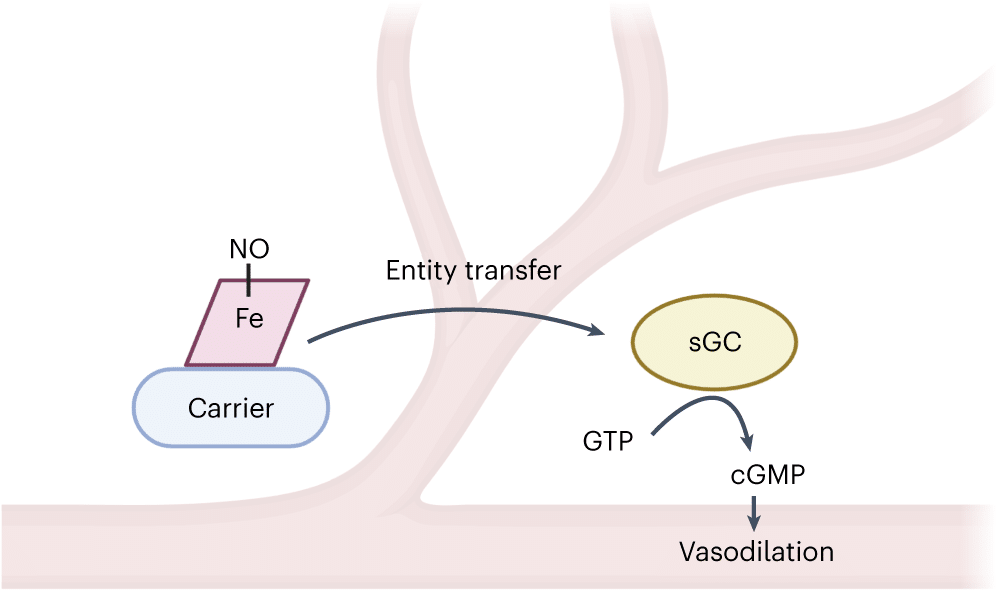A Paradigm Shift: NO-Ferroheme as a Key Signaling Entity in the Vasculature
Nitric oxide (NO), a seemingly simple molecule, plays a crucial role as a signaling substance in regulating blood pressure by inducing vasodilation. However, the precise mechanism of its action has remained enigmatic for a long time. In a groundbreaking discovery, researchers at the Karolinska Institutet in Sweden have unveiled a novel principle that challenges the conventional Nobel Prize-winning hypothesis regarding NO’s signaling mechanism. This groundbreaking research, which presents a paradigm shift in the field, is documented in the journal Nature Chemical Biology.
NO: A Vital Signaling Molecule
For many years, it has been well-established that nitric oxide (NO), also known as nitrogen monoxide, serves as a pivotal signaling molecule in various essential physiological processes. This discovery was so significant that it earned the Nobel Prize in Physiology or Medicine in 1998. One of its primary functions is to initiate a signaling cascade that induces relaxation of the smooth muscles within blood vessels, leading to their expansion and a subsequent reduction in blood pressure. This very function is why nitroglycerin, a compound that releases NO, has been a common treatment for angina.
Tip: Please fill out this form to determine whether or not you or a friend are eligible for a CGM and, Also learn about CGM Sensor
Challenging the Conventional Belief
Surprisingly, the recent findings suggest that the active partner in the chemical interaction responsible for these effects may not be the NO molecule itself.
“This discovery is a bit controversial and represents a paradigm shift within our field,” says Professor Jon Lundberg, the lead author of the study, alongside Andrei Kleschyov and Mattias Carlström, all affiliated with the Department of Physiology and Pharmacology at the Karolinska Institutet.
Traditionally, it has been postulated that NO, once formed in the endothelium (the inner lining of blood vessels), diffuses as a gas, dispersing randomly until it encounters an enzyme called guanylyl cyclase in the vascular smooth muscle, which then triggers vessel relaxation. This journey spans a distance of less than a millimeter, a seemingly challenging endeavor for a molecule as reactive and volatile as NO.
Read Guide about Wegovy Dosage Guide: The Best Way For Weight Loss
“It’s difficult to believe that it can work, given NO’s high reactivity and volatility, which should make its survival during such a journey questionable,” adds Professor Jon Lundberg.
Moreover, the presence of free NO in cells has been challenging to demonstrate, intensifying the mystery surrounding the actual signaling mechanism.
A Novel Signaling Substance
The Karolinska Institutet research team explored the hypothesis that NO forms bonds with a “heme group,” a complex surrounding a single iron atom that is commonly found in hemoglobin and is also available in endothelial cells. Together, they create a new and considerably more stable compound known as NO-ferroheme. The researchers observed that NO-ferroheme significantly expanded blood vessels in mice and rats and, through controlled experiments, directly activated guanylyl cyclase, serving as a key signaling substance in the signaling cascade.
Professor Lundberg notes, “Our next steps involve confirming that the endogenous NO-ferroheme formed in endothelial cells indeed functions as a bona fide signaling substance and unraveling the exact synthesis process within the body.”
These findings promise to enhance our understanding of the chemical interactions involved and may eventually pave the way for advanced treatments for cardiovascular diseases.
Must Read About: Maple Syrup: A Multifaceted Natural Sweetener Unveiled
This groundbreaking study received funding from the Swedish Research Council, the Swedish Heart-Lung Foundation, Novo Nordisk, the EFSD/Lilly European Diabetes Research Programme, the Ekhaga Foundation, and Karolinska Institutet. Additionally, Andrei Kleschyov holds a patent related to NO-heme, and Professors Jon Lundberg and Eddie Weitzberg are co-inventors on a patent application associated with the therapeutic use of inorganic nitrate.


